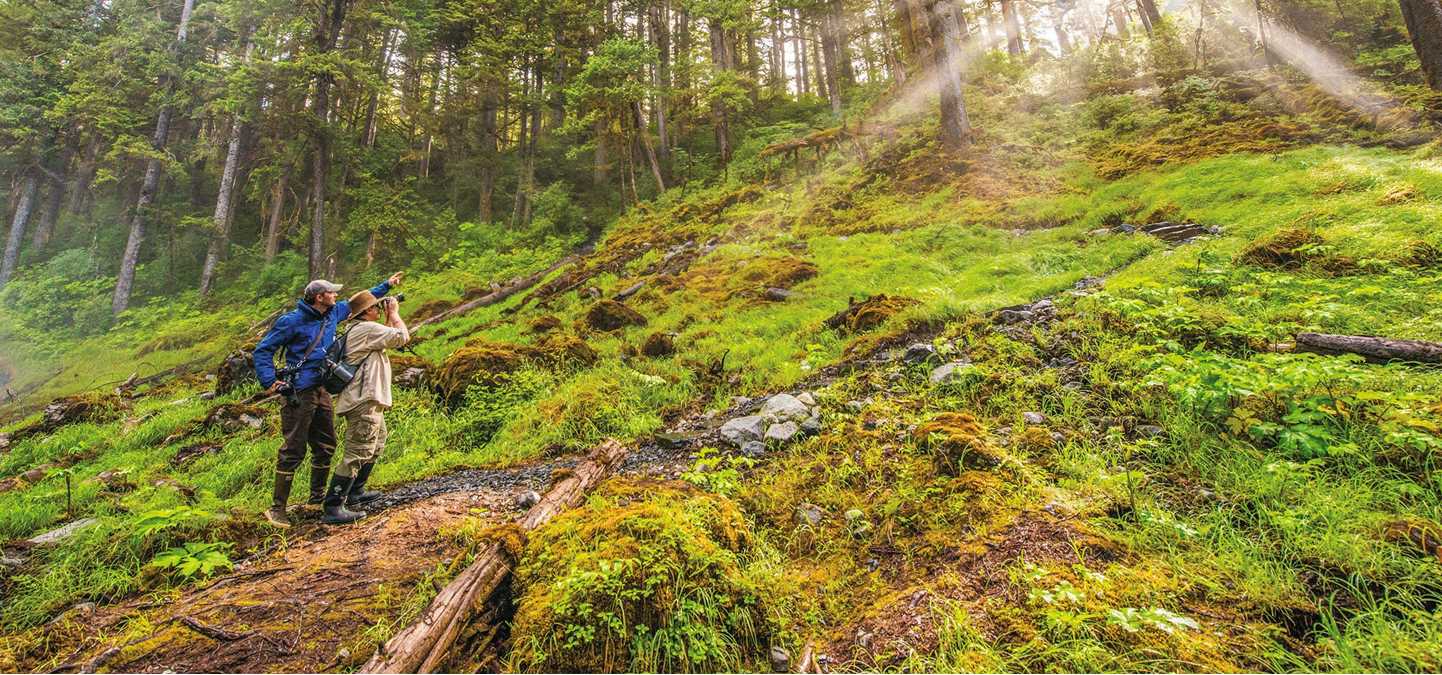Call +1.800.397.3348 or contact your travel advisor
Naturalists
Naturalists
More than just nature guides, our naturalists are engaging storytellers, each with their own rich experiences and fascinating tales from the field. They are as different as their specialties—which range from geology to zoology—and their knowledge about the natural world runs wide and deep. And while they are schooled in science, they have a knack for describing species and natural phenomena in relatable ways, whether explaining the behavior of a brown bear to an elementary school student or describing the physics of glacier formation to a Ph.D. holder. They know their destination inside and out and, often, they call it home.
Our naturalists are also inspiring travel companions who participate fully in the expedition, leading excursions and also joining guests at meals or in the lounge over drinks. Each team is made of naturalists with a range of specialties, so you can set out with a botanist on a morning hike and then take an afternoon Zodiac ride with a marine biologist. Or if a naturalist shares a particular passion of yours—say birding or geology—you can choose to join the excursions they lead. Our guests have been known to book another trip just to travel with a particular naturalist again.
More than just nature guides, our naturalists are engaging storytellers, each with their own rich experiences and fascinating tales from the field. They are as different as their specialties—which range from geology to zoology—and their knowledge about the natural world runs wide and deep. And while they are schooled in science, they have a knack for describing species and natural phenomena in relatable ways, whether explaining the behavior of a brown bear to an elementary school student or describing the physics of glacier formation to a Ph.D. holder. They know their destination inside and out and, often, they call it home....
Read more
Expedition staff are subject to change.
Meet our Naturalists
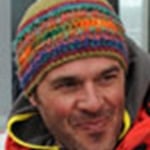
Santiago Imberti
An ornithologist, photographer, fisherman, climber, and writer, Santiago Imberti was born and raised in southern Patagonia, Argentina. He obtained a degree in tourism and later in ornithology, which allowed him to combine his love for nature and the outdoors with his work as a birdwatcher, naturalist, fly fishing, and mountain guide. He has been guiding trips in Patagonia, the Antarctic, and Arctic for some 25 years. However, his main passion is conservation and research therefore off the ships Santiago does field work on birds, mostly in southern Patagonia and is the President of Asociación Ambiente Sur; an NGO that seeks to protect the environment and educate the new generations on a sustainable way of life in southern Patagonia. From 2009 to 2014 he has coordinated the project to save the now critically endangered Hooded Grebe, which is an endemic bird in Patagonia; and the creation of Patagonia National Park, a massive protected area that aims to save the grebe and some of the least know habitats in South America. His many articles and stories have been published in scientific journals, popular travel magazines, books, and since his singing abilities are rather poor, he has produced a couple CDs of the beautiful bird sounds of South America, Patagonia, and Antarctica. He lives in Punta Arenas, southern Patagonia, Chile, with his wife and son.
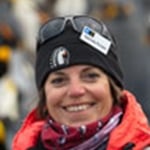
Gabriela Roldan
Gabriela is a social scientist with an innate curiosity about the world and people’s connections to faraway places. A native of Argentina, she has travelled extensively and worked as a naturalist guide to all corners of Patagonia, Tierra del Fuego, South Atlantic Islands and Antarctica. Somehow, the Northern Hemisphere has eluded her so far but Gabriela hopes that experience will happen very soon! Gabriela discovered a passion for Antarctica while living in Ushuaia, the southernmost city in the world. Her Antarctic experience created opportunities to take on many roles within Argentina’s Antarctic Programme and local government, ranging from assisting policymakers in tourism matters to creating and implementing strategies for the development of gateway cities. To satisfy her academic interests, Dr Roldan pursued a PhD in Antarctic Studies from the University of Canterbury, New Zealand. Currently, she conducts her Antarctic research at Gateway Antarctica, a Centre for Antarctic Studies and Research based in New Zealand. Her academic work focuses on Antarctic governance and environmental management, geopolitics of Antarctica and the Southern Ocean, polar identities, and polar tourism. Antarctic education and community outreach are pillar projects in Gabriela’s career. Over the last 20 years, she has designed and developed education programmes and resources in Argentina, Chile and New Zealand, using traditional learning resources to emerging digital technology. Gabriela is deeply invested with Antarctic education at the international level, serving as a member of the advisory Committee on Capacity Building, Education and Training for the Scientific Committee on Antarctic Research.
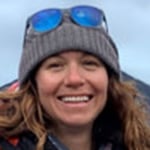
Jessica Farrer
Jessica has dedicated nearly 20 years to marine mammal research, with experience spanning diverse ecosystems. She has worked as a fisheries observer aboard commercial fishing vessels in the Bering Sea and contributed to marine mammal studies across Alaska, Hawaii, Washington State, the Galapagos, and Antarctica. Notably, she spent four seasons at a remote sea-ice camp near McMurdo Station, Antarctica, studying Weddell seals as part of the U.S. Antarctic Program. Currently, Jessica serves as the Research Director for The Whale Museum in Friday Harbor, WA. In this role, she oversees several conservation programs aimed at promoting marine mammal conservation in the Salish Sea through education and research. Her work with the urbanized marine mammals of the Pacific Northwest contrasts sharply with the stark, isolated expanses of Antarctica and the marine mammals that call this region home. Antarctica first captivated her in 2009 during her initial field season at McMurdo Station. Since then, she has returned to the Ice almost every year. Jessica is the unmanned aerial systems pilot for SR3's project, which monitors cetacean health around the Antarctic Peninsula. Her research focuses on the use of genomic techniques and non-invasive sampling to enhance our understanding of Antarctic marine predator ecology. She aims to expand knowledge of this relatively pristine ecosystem and apply lessons from the Pacific Northwest to advocate for early conservation measures in response to climate change and increasing human impact.
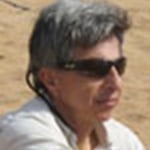
Salvador Cazar
Salvador Cazar studied biology at the Universidad Nacional Del Sur, Bahía Blanca, in Argentina and at the Catholic University of Ecuador. Between 1988 and 1994, Salvador worked as a naturalist and tour leader for several national and international tour operators, leading groups of visitors across the Ecuadorian rain forest, Andean forest, and to Galapagos. From 1995 to 2011, he performed a number of functions at the public and private level for national and international organizations. Among others, he acted as the regional coordinator of the Feasibility Study for the Environmental Management Program for the Gal á pagos Islands financed by the Inter-American Development Bank; coordinator of the Ecuadorian Permanent Commission for the Gal á pagos Islands; consultant for the Project "Support to the Global Management Plan for Tourism Development and Ecological Conservation of Gal á pagos National Park and Galapagos Marine Reserve" funded by the UNDP; executive director of the Ecuadorian Association of Ecotourism; instructor of environmental interpretation for the Gal á pagos National Park and KAPAWI Ecolodge & Reserve; coordinator of the Sustainable Tourism Program of Fundación ESQUEL–Ecuador; Conservation International–Ecuador sustainable tourism specialist; and Conservation International–Ecuador socio economic coordinator. At the moment, Salvador is working as a naturalist taking groups of visitors across Gal á pagos and continental Ecuador and providing technical assistance on different aspects of responsible travel to NGO´s, government organizations and businesses.
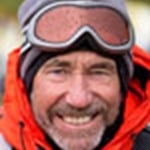
John Pailthorpe
John spent the early years of his life in London, before an inspirational teacher took him to the highlands of Scotland on a school adventure trip. From then on the natural world has been his passion. After teacher training in Bangor, North Wales, John began a thirty-year career in outdoor education centres and schools, teaching and leading children and adults in such pursuits as mountaineering, rock climbing, kayaking, and sailing throughout the U.K. and Europe. During this time John took time out to be part of six polar scientific expeditions, as a field assistant/guide. Two of these were with the British Antarctic Survey; the first a two-month field expedition to the Eklund Islands on the Antarctic Peninsula; the second, eight months as part of a king penguin and elephant seal study on South Georgia. He served as a boat skipper/field guide on a geological expedition to the northwest of Svalbard. More recently, he took part in three expeditions to the Greenland ice cap for the Scott Polar Research Institute of Cambridge, as part of the European Space Agency's “Cryosat” project. John is well aware that his career, and the wonderful experiences it has included, all began with one special teacher. With this in mind, he likes nothing more than to pass on his enthusiasm for nature and all things outdoors, with the intention of promoting an awareness and caring attitude towards the natural environment.
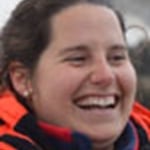
Madalena Patacho
Madalena was born and raised in Portugal. Her childhood was spent in Belem, surrounded by Portuguese maritime history, always dreaming about exploring the oceans. Her love for nature has led her to study biology and later to take a Master’s in management of natural resources, specialized in ecotourism. She has lived on Príncipe Island, off the west coast of Africa, working with local communities on a responsible tourism project. She is inspired by the principles of ecotourism and is always looking for the best ways to contribute and leave a positive footprint everywhere. To travel around the world is her biggest passion, connecting with different cultures, exploring the wilderness and having a taste of local genuine experiences. Following this passion has allowed her to extensively explore Latin America, Asia, Europe, Africa and the Arctic. Her knowledge and enthusiastic storyteller talks have taken her to several universities, lecturing about ecotourism, sustainable tourism and nature conservation. When she is not exploring the world, she dedicates her time to Ocean literacy and environmental education working as a marine educator with a variety of audiences raising awareness on ocean conservation.
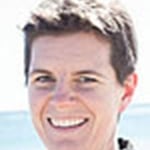
Deb Goodwin
Passionate about creating opportunities for explorers of all ages to engage with wild places, Deb embraces the power of immersive experiences to inspire curiosity and conservation. Extended backcountry expeditions as a teen jumpstarted this commitment and continue to motivate her travels. No matter the destination, she observes the natural environment with a detective’s mindset, seeking to understand how local geology, weather, ecological processes, and human history together shape the coastal land- and seascape. Deb studied earth science at Carleton College and holds graduate degrees in ecosystem biology, oceanography, and experiential education. Over the last two decades, she has taught and led science projects in locations around the world, complemented by intervals with the National Park Service and wilderness-based leadership development programs. As Associate Professor of Oceanography and Chief Scientist at Sea Education Association, Deb takes undergraduates on multi-month voyages aboard sailing research vessels, training them in scientific techniques, navigation, leadership, and environmental and cultural stewardship. Interested particularly in documenting spatial/temporal changes, Deb leverages long-term datasets, remote sensing, and field observations to explore marine dynamics ranging from offshore plastic pollution to the coastal ice-ocean interface. She is also a member of the Expedition Science Committee, reviewing proposals and coordinating logistics to support visiting researchers joining Lindblad Expeditions/National Geographic voyages.

Karina López
Karina López was born in Guayaquil, Ecuador where she received her bachelor’s degree in Tourism and Hospitality, a second technical degree as a Professional Guide of Ecuador, and a third diploma in French language at the Alliance Francaise. She moved to San Cristóbal Island in 1996 and has divided her time between there and the mainland for nearly two decades. Her deep passion for nature, birdwatching, and marine life led her to become a certified national park naturalist in 1999, and since then she has guided in the Galápagos Islands and also led trips in the Amazon rain forest and throughout the Sacred Valley in Peru. Equal to her passion for guiding on land is her love for guiding underwater, and in 2001 she became certified as a dive master naturalist for the Marine Reserve of Galápagos. She loves to help her guests have the magical experience of swimming with sea turtles, frolicking with playful sea lions, and searching for the elusive but adorable Galápagos penguins. When not leading groups in her beloved islands, she can be found exploring her other passions of international travel, photography, creative writing, cooking traditional Ecuadorian cuisine, and playing soccer.
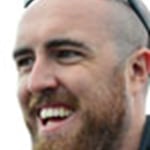
Conor Ryan
For as long as he can remember, Conor has always been preoccupied with the natural world, from the whales to the fungi. For most of his life he has been an islander: growing up in Cobh, Ireland and settling down in Tobermory in the Hebrides, Scotland. When not on Lindblad ships, Conor likes to explore the Hebrides by sea-kayak and search the Atlantic rainforests and shorelines for edible mushrooms and seaweeds. Conor completed his PhD in Galway on the ecology and population structure of baleen whales in the Celtic Sea and Cape Verde, using stable isotope analysis, molecular genetics and organochlorine contaminants. During this time, he realized that the lab was not his natural habitat, so he now works as a research field scientist, using passive acoustics and line transect surveys to map whale distribution and estimate population sizes. He holds two honorary research fellowships: at the Scottish Association of Marine Science, and on the sailing Research Vessel Song of the Whale. Conor enjoys writing about whale conservation, historical ecology and animal welfare in science. He has published over 50 peer-reviewed articles and book chapters. He lives for sea-watching: staring at the ocean to see what marvels it bestows.

Deirdre Mitchell
Deirdre Mitchell grew up exploring the mountains of her home country of Scotland and immersing herself in its history and culture. This love of the past led her to study for an M.A. in Scottish history at the University of St. Andrews, where she studied everything from the medieval history of Scotland to the art history of Europe! She then went on to gain a graduate degree in Museum and Gallery Studies, before spending a year as a trainee curator at the Museum of the University of St Andrews. Having completed her studies and training, Deirdre decided it was time for an adventure. She applied for the position of curator at the South Georgia Museum on the remote sub-Antarctic island of South Georgia, and quickly fell in love with all things polar. This was the start of an exciting career change which saw her begin working for Lindblad Expeditions-National Geographic in Antarctica and for the British Antarctic Survey at their research stations in Antarctica and on South Georgia, all while continuing to work in museums back home in Scotland! Recently she finally reunited these two passions by returning to the South Georgia Museum in the position of Museum Director. Deirdre now divides her time between the Scottish Highland capital of Inverness and the island of South Georgia, meaning she enjoys year-round summers!
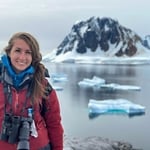
Julia Huggins
Julia is an earth-systems scientist who studies how the interactions between living and non-living parts of Earth’s environments can shape ecosystems and global climate. She is based in Squamish, BC, Canada, and through her research collaborations she also works at research laboratories in Europe and spends time on open-ocean scientific research vessels around the world. Julia’s passion for environmental science and education started at a young age when she grew up exploring the mountains of Wyoming and the seacoast of New England. Julia studied biology at Lewis & Clark College in Portland, OR, and spent several years researching how symbiotic relationships between trees, mushrooms, and soil microbes drive ecosystem-level processes. This work brought her to remote corners of the world, including New Zealand, Patagonia, and Alaska. Julia completed her Ph.D. at the University of British Columbia in Vancouver, BC, Canada, where she studied how chemical processes carried out by tiny microorganisms regulate the health of marine environments. For this research, Julia organized oceanography trips in British Columbia and month-long research expeditions in the Pacific Ocean off the coasts of Mexico and Chile. Throughout her research career, Julia has combined her love of the outdoors with her work as a science educator. Julia has worked as a naturalist and backcountry guide for more than 10 years throughout the Pacific Northwest. She is also a co-founder of the BOAT non-profit that supports access to outdoor education, and she helps make science fun and engaging as a co-host of the Nerdy About Nature podcast. She believes deeply in the power of fun, accessible, place-based education; sharing the things that inspire her about the natural world is the root of her motivation for research and science outreach.
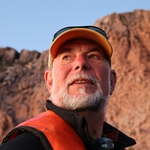
Jeff Campbell
Jeff Campbell fell in love with the ocean while attending boatbuilding school in Eastport, Maine. Since completing his MS in Marine and Estuarine Science at Western Washington University, he has worked for NOAA documenting the ecological impacts of transoceanic fiber-optic cable; the Washington Department of Fish & Wildlife developing an aging method for sixgill sharks; the Lummi Tribe as a Harvest Biologist; Northwest Indian College teaching Fisheries and Wildlife Biology, and as a volunteer for the Whatcom County Marine Mammal Stranding Network. He has been involved in research developing mitigation methods for harmful algae blooms, sterilization methods for oil tanker ballast water, and techniques for screening refinery effluent for harmful ecological effects. He also served as Principle Director on a USDA-funded grant using student interns to study the impact of nutrient-rich run-off on seasonal dead-zones in Bellingham Bay. Jeff is passionate about the marine environment, particularly the northeast Pacific, and believes that the key to preserving this fragile biome is lighting the spark in others by sharing his knowledge on the interconnectedness of seemingly disparate systems. He is particularly interested in the effects of ocean acidification on the larval stages of mollusk, and arthropod larvae. Summers for the last three years have found him driving expedition landing craft and sharing the joys of whale watching with guests. A Lummi Island, Washington resident for more than 18 years, Jeff lives with his wife Penny, who has been a marine naturalist on whale watch boats in the Salish Sea for many years, and their cat, Boo.
Showing 12 of 143

